National Institutes of Technology

The National Institutes of Technology (NITs) are a group of premier federally-funded public engineering institutes in India. These institutions have been declared as Institutes of National Importance alongside the Indian Institutes of Technology (IITs) by an Act of Parliament of India.[1] These institutes of national importance receive special recognition and funding from the Government of India. The NIT Council is the supreme governing body of India's National Institutes of Technology (NIT) system. All 31 NITs are funded by the Government of India. These institutes are among the top ranked engineering colleges in India. The National Institutes of Technology (NITs) have one of the lowest acceptance rates for engineering institutes, of around 2 to 3 percent, second only to the Indian Institutes of Technology (IITs) in India.[2][3][4]
Admission to the under-graduate course (B.Tech) in NITs is through the highly competitive Joint Entrance Examination (JEE) Mains.[5] From 2015, Joint Seat Allocation Authority (JoSSA) conducts common counselling and allocates seats jointly for all Indian Institutes of Technology (IITs), National Institutes of Technology (NITs) and Indian Institutes of Information Technology (IIITs). In 2015, over 1,300,000 candidates appeared for the JEE exam for admission to 28,000 undergraduate engineering seats in 68 centrally-funded technical institutes that included all 19 IITs (10,000 seats), 31 NITs (15,500 seats) and 18 IIITs (2,500 seats).[6][7][8]
NITs offer degree courses at bachelors, masters, and doctorate levels in various branches of engineering and technology. All NITs are autonomous which enables them to set up their own curriculum.
On their inception decades ago, all NITs were referred to as Regional Engineering Colleges (RECs) and were governed by their respective state governments. In 2002, MHRD Minister Murli Manohar Joshi decided to upgrade all RECs to "National Institutes of Technology" (NITs). The upgrade was designed along the lines of the prestigious Indian Institutes of Technology (IITs). NITs were founded to promote regional diversity and multi-cultural understanding in India. Comprising thirty-one autonomous institutes, they are each located in one major state/territory of India. In 2007,the Indian government declared these schools as Institutes of National Importance.
Admission to NITs was done by the erstwhile All India Engineering Entrance Examination, now replaced by Joint Entrance Examination Main (JEE Main) conducted across India.Central Counselling Board(CCB) was conducting the Online counselling for admission into NITs till 2012. It was then replaced by Central Seat Allocation Board (CSAB) which held the seat allocation process in NITs till 2014. From 2015, Joint Seat Allocation Authority (JoSAA) allocated the seats in IITs, IIITs and NITs. Joint Seat Allocation Authority 2015 (JoSAA 2015) conducted the joint admission process for a total of 31 NITs.[9][10][11]
History
The Government started fourteen RECs between 1959 and 1965, at Warangal, Calicut, Durgapur, Kurukshetra, Jamshedpur, Jaipur, Nagpur, Rourkela, Srinagar, Surathkal, Surat, Trichy, Bhopal, and Allahabad. It established one in Silchar in 1967 and added two others located at Hamirpur in 1986, and Jalandhar in 1987.
The RECs were jointly operated by the central government and the concerned state government. Non-recurring expenditures and expenditures for post-graduate courses during the REC period were borne by the central government while recurring expenditure on undergraduate courses was shared equally by central and state governments.
The success of technology-based industry led to high demand for technical and scientific education. Due to the enormous costs and infrastructure involved in creating globally respected Indian Institutes of Technology (IIT), in 2002 MHRD Minister Murli Manohar Joshi decided to upgrade RECs to "National Institutes of Technology" (NITs) instead of creating IITs. The central government controls NITs and provides all funding. In 2002, all RECs became NITs.
The upgrade was designed along the lines of the prestigious Indian Institutes of Technology (IITs) after it was concluded that RECs had potential as proven by the success of their alumni and their contributions in the field of technical education. Subsequently, funding and autonomy for NITs increased, and they award degrees which have raised their graduates' perceived value. These changes implemented recommendations of the "High Powered Review Committee" (HPRC).[12] The HPRC, chaired by R.A. Mashelkar, submitted its report entitled "Strategic Road Map for Academic Excellence of Future RECs" in 1998.
In 2002, MHRD issued NIT status to three more colleges, located at Patna (Bihar Engineering College—a 110-year-old college), Raipur (Government Engineering College),[13] and Agartala (Tripura Engineering College).[13] Based on the request of state governments and feasibility, future NITs are either converted from existing institutes or can be freshly created. The 21st (and the first brand-new) NIT is planned for Imphal in the north-eastern state of Manipur at an initial cost of Rs. 500 crores. In 2010, the government announced setting up ten new NITs[14] in the remaining states/territories. This would lead to every state in India having its own NIT.
With the technology based industry's continuing growth, the government decided to upgrade twenty National Institutes of Technology to full-fledged technical universities. Parliament passed enabling legislation, the National Institutes of Technology Act in 2007 and took effect on 15 August of that year. The target is to fulfill the need for quality manpower in the field of engineering, science, and technology and to provide consistent governance, fee structure, and rules across the NITs.[15][16][17] The law designates each NIT an Institute of National Importance (INI).
Institute and financing
Average NIT funding increased to ₹ 100 crores by year 2011. On average, each NIT also receives ₹ 20-25 crore under World Bank funded Technical Education Quality Improvement Program (TEQIP I and TEQIP II).[18]
Governance
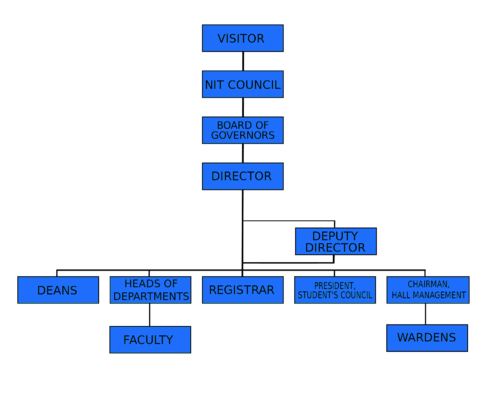
The President of India is the ex officio visitor of all the NITs. The NIT Council works directly under him and it includes the minister-in-charge of technical education in Central Government, the Chairmen and the Directors of all the NITs, the Chairman of University Grants Commission (India), the Director General of CSIR, the Directors of other selected central institutions of repute, members of Parliament, Joint Council Secretary of Ministry of Human Resource and Development, nominees of the Central Government, AICTE, and the Visitor.
Below the NIT Council is each NITs Board of Governors.
The Board of Governors of every individual NIT consists of the following members:
- Chairman -An Eminent Technologist / Engineer / Educationist to be nominated by the Govt. of India.
- Member Secretary- Director of the NIT.
- Nominee of the Ministry of HRD, Govt. of India.
- Nominee of the Department of the Higher / Technical Education of the respective state government.
- Head of another Technical Institution in the region or an eminent Technologist to be nominated by Central Govt.
- Director, IIT (in the region) or his nominee.
- Nominee of the UGC not below the rank of a Dy Secretary.
- Nominee of the AICTE not below the rank of an Advisor.
- An Alumnus of the Institute from amongst alumni in Education / Industry to be nominated by Board of Governors.
- Two representatives representing large, medium and small scale Industries to be nominated by Central Government.
- One Professor and one Assistant Professor of the Institute by rotation.
The Director serves under the Board of Governors, and is the school's chief academic and executive officer. Academic policies are decided by its Senate, which is composed of some professors and other representatives. The Senate controls and approves the curriculum, courses, examinations, and results. Senate committees examine specific academic matters. The teaching, training, and research activities of various departments of the institute are periodically reviewed to maintain educational standards. The Director is the ex officio Chairman of the Senate. The Deputy Director is subordinate to the Director. Together they manage the Deans, Heads of Departments, Registrar, President of the Students' Council, and Chairman of the Hall Management Committee. Deans and Heads of Departments in NITs are administrative postings rather than career paths. Faculty members serve as Deans and Heads of Departments for limited periods, typically 2 to 3 years, then returning to regular faculty duties. The Registrar is the chief administrative officer and overviews day-to-day operations. Below the Head of Department (HOD), are the various faculty members (professors, assistant professors, and lecturers). The Warden serves under the Chairman of the Hall Management Committee.
- The National Institutes of Technology
- NIT Trichy
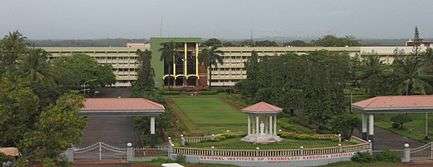 NIT Surathkal
NIT Surathkal- NIT Warangal
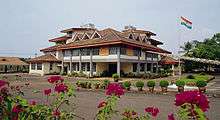 NIT Calicut
NIT Calicut NIT Rourkela
NIT Rourkela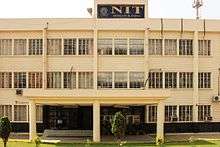 NIT Durgapur
NIT Durgapur NIT Raipur
NIT Raipur- NIT Jamshedpur
 NIT Allahabad
NIT Allahabad NIT Surat
NIT Surat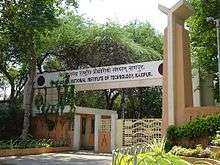 NIT Nagpur
NIT Nagpur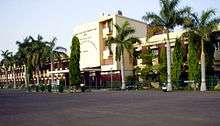 NIT Bhopal
NIT Bhopal NIT Jaipur
NIT Jaipur NIT Kurukshetra
NIT Kurukshetra- NIT Hamirpur
 NIT Srinagar
NIT Srinagar NIT Jalandhar
NIT Jalandhar NIT Silchar
NIT Silchar
Education
Courses are divided into semesters with evaluation on the basis of credits, which allows for proportional weighting based on the course's importance. For each semester, grades range from 3 to 10. Semester evaluations are independent. The weighted average of the semesters is used to compute the cumulative grade point average (CGPA).
NITs are implementing dual degree programs, integrated postgraduate studies that complete in 5 years rather than the 6-year conventional track of a Bachelor's followed by a Master's degree. These programs encourage academic research and began with mathematics and computing.
Stringent faculty recruitment and industry collaboration also contribute to NIT success. Faculty other than lecturers must have a Ph.D. and relevant teaching and industry experience. Existing faculty who do not meet these criteria enroll under a Quality Improvement Programme (QIP) at IITs and IISc.
Student life
NITs provide on-campus housing to students, research scholars, and faculty members.[19] Students live in hostels, also known as halls, throughout their college life. Most have single accommodation but many live in double or triple rooms during their initial years. Every
hostel has a recreation room equipped with cable television, magazines, newspapers, and indoor games and in-room Internet connectivity. Every hall has its own cafeteria managed by the college or by a local private organization.[20] NITs also have a common cafeteria for students and a separate cafeteria for professors. During vacations, hostel dining is generally closed and the common cafeterias serve students who stay on campus.
All the NITs have an athletic ground and facilities for field, indoor and aquatic events.[21]
NIT campuses across India arrange official welcome parties and interaction sessions to acquaint newcomers with senior students and professors. Faculties and researchers from IITs, ISM and IISc organize occasional technical seminars and research labs.
Libraries
_of_the_institute.jpg)
NITs have a Central Library equipped with technical books, literature, fiction, scientific journals, and other electronic material. Most have digitized their libraries. Some provide an intranet library facility. Every departmental library has high-speed connectivity. Electronic libraries allow students access to online journals and other periodicals through the AICTE-INDEST consortium, an initiative by the Ministry of Human Resource Development. Students also have access to IEEE documents and journals.[22][23] While some have video conferencing facilities, others are upgrading under the World Bank funded TEQIP scheme.
Student government
Some NITs individually conduct elections to elect student body a general secretary and vice president. These representatives are generally responsible for communicating with the college management and media, organising festivals, and also for various development programmes in their college. Some NITs (such as NIT, Rourkela, SVNIT, Surat and VNIT, Nagpur) have recently adopted online voting process. The committee which monitors the flow of funds has a student body representative. This committee also includes the chairman of board, an MHRD representative, and NIT professors. But due to some disturbance in voting process, there have been no elections since 2008 in SVNIT, Surat.[24]
Disciplinary Committee
The Disciplinary Committee (DISCO) consists of the Director, the student affairs officer, and professors. and reports to MHRD. DISCO regulates student activities and combats student harassment and illegitimate student politics. After a series of harassment incidents, all NITs took strict measures especially to protect first year students.[25]
Extra-curricular activities
Popular extra curricular activities include National Cadet Corps (NCC), National Service Scheme (NSS), Indian Society for Technical
Education (ISTE), and annual college festivities.[26][27]
Students at NITs run hobby clubs such as Linux User Groups (LUGs), music clubs, debate clubs, literary clubs, and web design teams. Students also publish campus magazines which showcase student creativity and journalism. The first Linux User group in India, Bharat Linux User Group was formed in early 1997 at NIT Surat (SVNIT). Students conduct regular quizzes and cultural programs. They also present research papers and participate in national level technical festivals at IITs, ISM, IISc and NITs. Most NITs promote entrepreneurship by creating on-campus incubation centers under the STEP program.[28][29][30]
O-INSA
Organization for Inter-NIT Student Activities (O-INSA) coordinates cultural, technical, sports and other groups.[31]
Inter-NIT sports
NITs compete annually in an Inter-NIT sports meeting, which rotates among schools.[31][32] Winners get cash prizes and trophies. Boys and girls compete separately. During February and March, NITs conduct annual sports contests in their respective locations. However, since 2007-2008, Inter NIT meetings have not been held during the academic calendar, to facilitate participation of more NITs and to avoid students missing class. In recent years, National Institute of Technology, Jamshedpur has been the most successful.
Festivals
NITs conduct technical and cultural festivals to showcase student talents. Technical festivals include research paper presentations, business quizzes, robotics competitions etc. Some NITs conduct online coding contests, attracting participants from multinational corporations and international universities. NITs also conduct cultural festivals with celebrity and student participants, including those from other schools. Festivals last 3 to 4 days and are usually held all around the year depending upon institute's academic calendar. Corporations through sponsorships (generally asked by students)and college administration help fund these events. Organizing committee generally comprises faculty advisers and student coordinators. The structure of organizing committee varies from fest to fest. These fest are not as large as some of IITs in terms of participation, crowd, and prizes but are organized with greater efficiency (participation per rupee spent in the fund) as they don't have funds as much as that of IITs have but participation is remarkable.
- NIT Arunachal Pradesh conducts two festivals in an academic year, Addovedi, and Atulyam which are the technical and cultural festival respectively.Both the festivals are inter college festival and a large number of students from the North Eastern region participate in it.
- NIT Jalandhar annually conducts 3 days Cultural Festival "Utkansh" generally held in month of March and 3 days Technical Festival "techNITi" generally held in the month of November or February.
- NIT Raipur conducts two festivals in an academic year, Aavartan and Eclectika which are the Techno-Management and cultural festival respectively.Both the festivals are inter college festival and a large number of students from the central India region participate in it.NIT Raipur also organize inter college sports festival Samar.
- NIT Nagpur conducts AXIS, the annual technical festival generally held in September.
- NIT Allahabad organizes Avishkar, the technical festival which runs for 3 days, Gnosiomania, the largest knowledge festival of India which runs for a week, Culrav, the cultural festival, and an inter-NIT-sports festival.
- NIT Jamshedpur conducts a National Level technical festival in March, and is called Ojass, immediately followed by Utkarsh, the cultural festival. Also, the Metallurgy and Materials Science department of the college holds its own festival Technica.
- NIT Bhopal organizes a student technical-cultural week known as Techno MAFFICK every year in the month of march.But in 2012 it was cancelled by its new director Dr.Appu Kuttan K.K. as a part of disciplinary actions.
- NIT Agartala conducts two fests, a techfest known as "Aayam"[33] and a cultural fest known as "Mokshaa".[33]
- Recstacy, popularly known as RECS, is NIT Durgapur's annual social and cultural festival. Aarohan is the Annual National Techno-Management festival which is organised during even semesters and lasts for four days.
- NIT Warangal organises 2 major festivals in an academic year- Technozion(Technical) and Spring Spree(Cultural). Both festivals attract thousands of students across the country every year.
- NIT Calicut conducts two annual festivals, Tathva,[34] its Techno-management festival, and Ragam, its Cultural festival.[35]
- NIT Hamirpur annually conducts a national level cultural festival called "Hill 'Ffair" in fall and an engineering festival called "Nimbus" in spring.
- NIT Patna's technical and cultural festivals are CORONA and Melange respectively.
- NIT Rourkela organizes the largest techno-management festival in the state of Odisha, named "InnoVision" (formerly "Confluence") and also the spring festival, "Nitrutsav" annually in the month of November and March, respectively.
- NIT Srinagar celebrates its annual techno-management festival Techvaganza during April. It is an annual three-day science and technology festival of the institute. There are exhibitions and a display of technology from all parts of India. The festival is organized, financially managed and conducted entirely by the students of the Institute, with sponsorships from reputed companies. It will be again held on 2013.
- NIT Surat celebrates student-organised festivals like MindBend, Sparsh, Autumnfest, Quest (by ACM), Chunouti (Sports festival), JoyFest (by iIndia), MMNCT and Prakriti (organised by Applied Science department).
- NIT Surathkal hosts the biggest cultural extravaganza in South India called Incident and also organizes a technical fest, Engineer which claims a participation of around a hundred colleges and is acclaimed as South India's biggest Technical Fest after Shastra of IIT Madras.
- NIT Trichy organizes a technical fest called "Pragyan" , the second largest technical festival in South India and one of the biggest cultural festivals in Tamil Nadu called "Festember".[36][37][38]
- NIT Silchar organises Incandescence-The techno-cultural fest. Under its umbrella comes Sankriti the cultural fest and Technoesis the technical. NIT Silchar also organises Bizarcade the biz fest for the budding entrepreneurs of India and Thundermarch, the rock fest.
- NIT Sikkim celebrates its annual technical festival called ABHIYANTRAN. In which lecturers from abroad and some prestigious institutions address the audience .
Inter-NIT sports
NITs compete annually in an Inter-NIT sports meeting, which rotates among schools.[31][32] Winners get cash prizes and trophies. Boys and girls compete separately. During February and March, NITs conduct annual sports contests in their respective locations. However, since 2007-2008, Inter NIT meetings have not been held during the academic calendar, to facilitate participation of more NITs and to avoid students missing class. In recent years, National Institute of Technology, Jamshedpur has been the most successful.
Alumni
This is a list of some of the notable alumni of the National Institutes of Technology in India.
Business/industry
| Name | Alma mater | Achievements |
|---|---|---|
| Natarajan Chandrasekaran | NIT, Trichy | CEO, Tata Consultancy Services |
| C. P. Gurnani | NIT, Rourkela | CEO, Mahindra Satyam |
| K. V. Kamath | NIT, Surathkal | Chief of the New Development Bank at BRICS, Former CEO of ICICI Bank, Padma Bhushan Awardee |
| Shashank ND | NIT, Surathkal | Founder and CEO of Practo Health, Forbes 30 under 30 Asia |
| Srini Raju | NIT, Kurukshetra | Chairman, Peepul Capital, iLabs VCF, Former CEO of Cognizant Technology Solutions & Satyam Enterprise Solutions |
| K. R. Sridhar | NIT, Trichy | Founder and CEO of Bloom Energy |
| Shyam Srinivasan | NIT, Trichy | CEO and Managing Director The Federal Bank Ltd. |
| Nelabhotla Venkateswarlu | NIT, Allahabad | CEO, Emami Limited |
| Dinesh Keskar | NIT, Nagpur | Senior VP, Boeing Aircraft Trading and Head Boeing India. |
Public service
| Name | Alma mater | Achievements |
|---|---|---|
| Dr.Thomas Abraham | NIT, Jaipur | Chairman of the Global Organization of People of Indian Origin, coined the term PIO |
| Dawood Danesh Jafari | NIT, Srinagar | Minister of Finance & Economic Affairs, Iran |
| Ajit Jogi | NIT, Bhopal | First chief minister of Chhattisgarh also a former lecturer at NIT Raipur. |
| Deep Joshi | NIT, Allahabad | Recipient of Magsaysay award & Padma Shri, Social activist, founder of PRADAN(NGO) |
| Hemant Karkare | NIT, Nagpur | Maharashtra Anti-Terrorism Squad (ATS) chief, killed during the November 2008 Mumbai Terrorist Attacks. |
| Nitish Kumar | NIT, Patna | Chief minister of Bihar |
| Lakshmi Narayana | NIT, Warangal | Former Joint Director for India's Central Bureau of Investigation |
| Suresh Pachouri | NIT, Bhopal | Member of Parliament |
| Prabhakaran Paleri | NIT, Calicut | Former director general, Indian Coast Guard |
| Ram Vinay Shahi | NIT, Jamshedpur | Longest-serving power secretary of India |
| Abhishek Singh | NIT, Raipur | Member of Parliament from Rajnandgaon Region |
Academia/technology and research
| Name | Alma mater | Achievements |
|---|---|---|
| Siva S. Banda | NIT, Warangal | Director of the Control Science Center of Excellence and Senior Scientist in Control Theory for the Air Vehicles |
| Samir Barua | NIT, Nagpur | Director, Indian Institute of Management Ahmedabad |
| Dr. Lalit Goel | NIT, Warangal | Professor and Head of Electrical Engineering, Nanyang Technological University |
| Baldev Raj | NIT, Raipur | Recipient of Padma Shri, former director of the Indira Gandhi Centre for Atomic Research, currently the Chairman of BOGs at National Institute of Technology Pondicherry. |
| Srinidhi Varadarajan | NIT, Warangal | Creator of SystemX and currently working at Virginia Tech. |
See also
References
- ↑ "University And Higher Education - Government of India, Ministry of Human Resource Development". mhrd.gov.in.
- ↑ "IIT, NIT admissions 2015: Results of fourth round of seat allotment : Notification". indiatoday.intoday.in. Retrieved 2016-05-03.
- ↑ "13 lakh students to appear for JEE (Main) test today - Times of India". The Times of India. Retrieved 2016-05-03.
- ↑ "JoSAA". josaa.nic.in. Retrieved 2016-05-03.
- ↑ "Undergraduate Programs". VNIT. Retrieved 2011-08-11.
- ↑ "IIT, NIT admissions 2015: Results of fourth round of seat allotment : Notification". indiatoday.intoday.in. Retrieved 2016-05-01.
- ↑ "13 lakh students to appear for JEE (Main) test today - Times of India". The Times of India. Retrieved 2016-05-01.
- ↑ "JoSAA". josaa.nic.in. Retrieved 2016-05-01.
- ↑ "3,200 engineering seats vacant, govt makes Rs 14 crore".
- ↑ "JoSAA admission 2015 concludes; No Spot Round this time".
- ↑ "Only 591 seats vacant at IITs, ISM Dhanbad".
- ↑ Department-related Parliamentary standing committee on human resource development 178th report on The National Institutes of Technology Bill, 2006". Accessed 6 July 2007.
- 1 2 "Major decisions: cabinet". Archive. Press Information Bureau, Government of India. Retrieved 2007-07-07.
- ↑ Central Counselling Board
- ↑ The text of the NIT Act 2007 National Institute of Technology Act 2006
- ↑ "PIB Press Releases". pib.nic.in.
- ↑ "Three Bills passed in 15 minutes", "The Hindu", 15 May 2007. Accessed 6 July 2007.
- ↑ "News & Broadcast - World Bank Provides US$1.05 billion to Improve Education in India". web.worldbank.org.
- ↑ http://www.nitc.ac.in/nitc/NIT_HOSTEL/index.htm Archived 15 April 2010 at the Wayback Machine.
- ↑ "NIT Trichy - Hostels". nitt.edu.
- ↑ www.nitrkl.ac.in
- ↑ "NIT Trichy - Library". nitt.edu.
- ↑ http://www.mnnit.ac.in/facilities/library.htm Archived 12 May 2010 at the Wayback Machine.
- ↑ http://www.nitc.ac.in/nitc/SAC.pdf Archived 11 July 2009 at the Wayback Machine.
- ↑ Tribune News Service. "Bail pleas of NIT ragging accused rejected", "The Tribune", Chandigarh, India, 18 October 2005. Accessed 6 July 2007.
- ↑ "NIT Trichy - National Service Scheme". nitt.edu.
- ↑ "NIT Trichy - National Cadet Corps". nitt.edu.
- ↑ ECELL | E-Cell , NIT Trichy
- ↑ E-cell VNIT
- ↑ "NIT-T to host TEDx on Sunday". The Hindu. Chennai, India. 18 September 2010.
- 1 2 3 "MNIT: Nothing found for 404". mnit.ac.in.
- 1 2 "Inter-NIT sports and games meet begins". The Hindu. Chennai, India. 16 December 2008.
- 1 2 NIT Agartala - Current Students
- ↑ "NIT-C's science fair for children". The Hindu. Chennai, India. 25 September 2011.
- ↑ "Cultural fete at NIT-C from Wednesday". The Hindu. Chennai, India. 12 March 2007.
- ↑ "NIT-T students eager to set a Guinness Record at Pragyan 2011". The Hindu. Chennai, India. 18 February 2011.
- ↑ "Pragyan 2011". pragyan.org.
- ↑ "Festember back with a bang". The Hindu. Chennai, India. 24 September 2010.
| Wikimedia Commons has media related to National Institutes of Technology. |